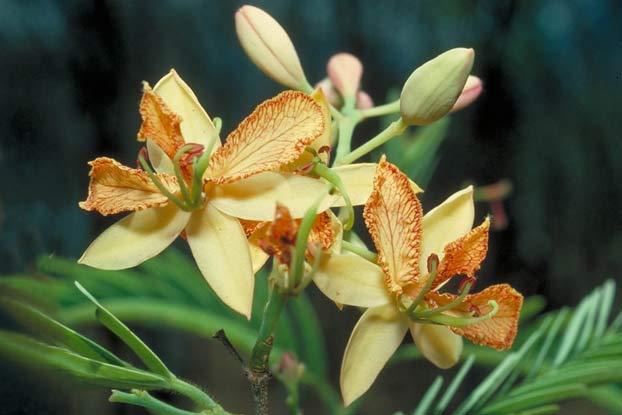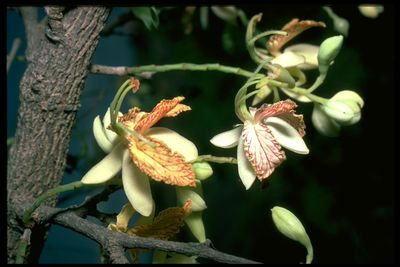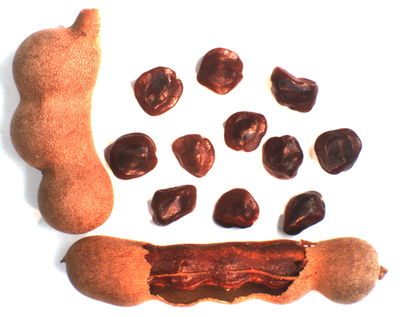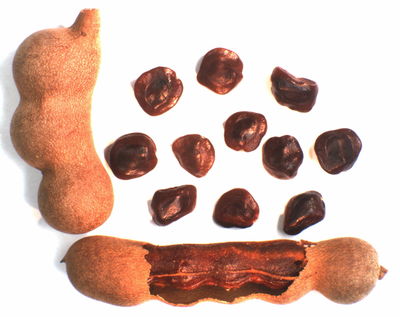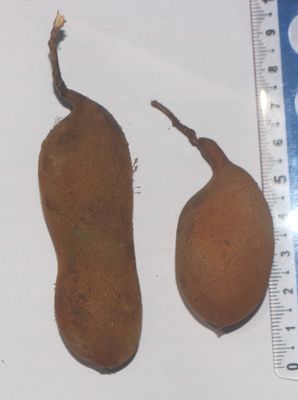Geography and distribution
The origin of tamarind is uncertain as it has been widely cultivated since ancient times. It is apparently native to tropical Africa and Madagascar but is found throughout the tropics. In some areas where it was originally cultivated, it has now run wild (it is naturalised).
Description
Overview: A tree up to 30 m tall with a spreading crown of up to 12 m in diameter.
Leaves:The leaves are up to 15 cm long and are composed of numerous small leaflets, which close at night, arranged in pairs along a central axis.
Flowers: The flowers are about 2.5 cm across and have three petals that are golden with a pattern of red veins as well as two tiny thread-like petals that are barely visible. The flowers are borne on inflorescences up to about 20 cm long.
Fruits: The brown, short-haired, sausage-like fruits contain an acidic pulp which is a much-prized ingredient of confectioneries, curries and pickles.
Threats and conservation
This widely distributed species is not currently of conservation concern.
Uses
From the sausage-shaped fruits of the tamarind tree comes the sticky acidic pulp that has been used as a food ingredient for thousands of years. The pulp was traded widely in ancient times leading to the extensive use and cultivation of tamarind, which in turn has resulted in the widespread tropical distribution of this species.
The edible fruits, and especially the pulp, can be eaten raw or used as an ingredient in curries, pickles, confectionery and in fermented drinks. The seeds can be eaten raw or cooked. Tamarind wood is used as timber, firewood and for charcoal. Other uses of the species include medicines, dyes and for planting as an ornamental.
Cultivation
Tamarindus indica is propagated at Kew using semi-ripe apical or internodal cuttings. Initially these are placed in a misting unit where there is bottom heat and frequent fogging. When rooting has occurred successfully, the plants are potted up into a loam-based or organic compost. They are then placed in a zone where the temperature is maintained at 18 to 28 ˚C. The watering regime keeps the substrate constantly moist but not soggy.
This species is subject to mealy bug, which is removed physically whenever possible. It is hoped that tamarind could be used as a host for the parasite sandalwood in future growth experiments in the Tropical Nursery.
Millennium Seed Bank: Seed storage
Kew's Millennium Seed Bank Partnership aims to save plant life world wide, focusing on plants under threat and those of most use in the future. Seeds are dried, packaged and stored at a sub-zero temperature in our seed bank vault.
Search Kew's Seed Information Database for further details on Tamarindus indica seeds
Tamarind at Kew
A tamarind from Ethiopia can be seen in Kew's Palm House.
There are also specimens of Tamarindus indica in the Tropical Nursery, one of the behind-the-scenes areas of the Gardens.

